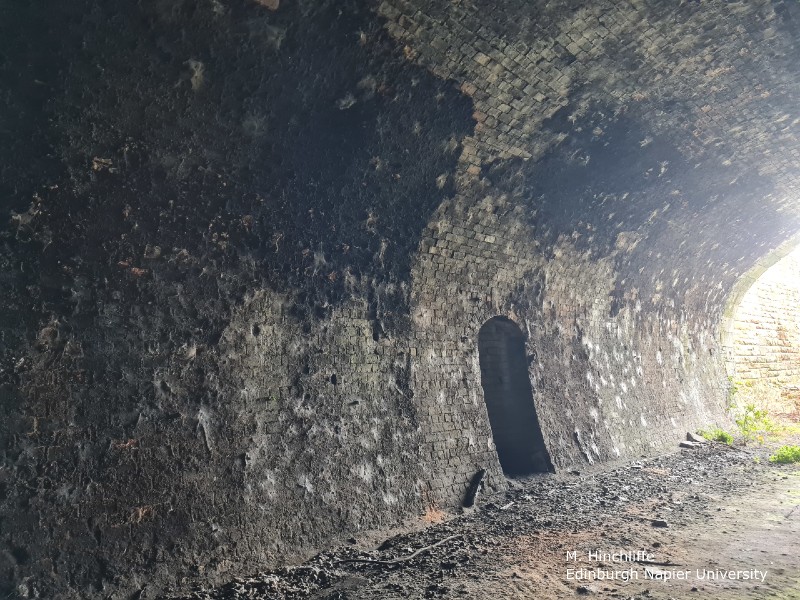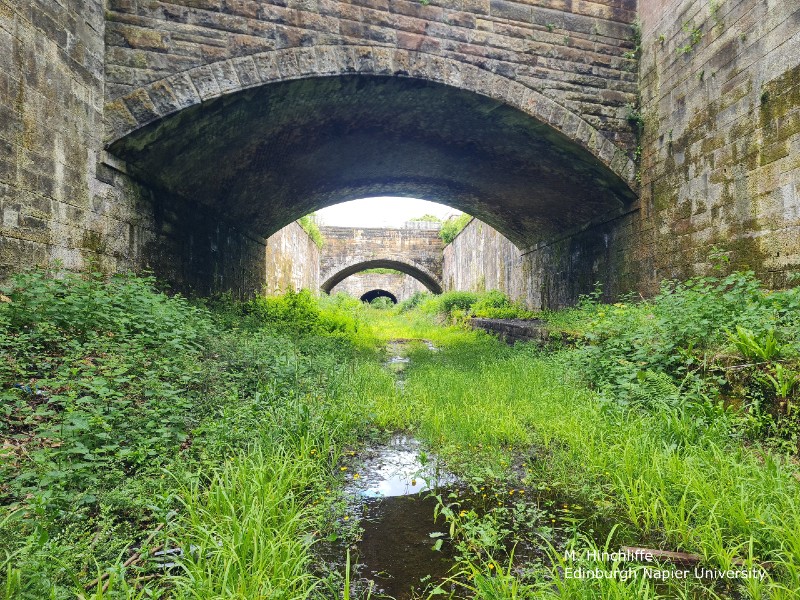How ‘disturbance’ can support biodiversity around the Historical Railways Estate
Published
27 May 2025
Written by Dr Jennifer Dodd, Associate Professor for Biodiversity and Restoration Ecology at Edinburgh Napier University.

Share this article
The effect that human activity has on our landscape is immense. We modify our landscape to produce food, to create housing, to travel, and for enjoyment. One of the positive consequences of this is that we have more control over how the landscape responds to natural disturbance events (e.g. flooding, wildfires, storms, and drought). While control over these disturbance events helps to protect our communities and material goods, there is a knock-on effect to the biodiversity in our landscape.
About the research
The ‘Minding the Gap’ for Biodiversity project is a unique partnership between National Highways, Balfour Beatty and Edinburgh Napier University. By working together, we’re exploring the role that site management plays in enhancing biodiversity across the Historical Railways Estate.
We have adopted a holistic approach to measuring biodiversity, encompassing a wide range of organisms, spanning single-celled organisms (e.g. bacteria and fungi) to complex animals, from within the soil to the plants and the animals living on the surface. Our research aims to deepen our understanding of the role that site management can play in mimicking natural ecosystem processes, leading to a greater range of habitats available to support increased levels of biodiversity. This will ultimately inform future management strategies of the Historical Railways Estate.

Why disturbance is important
Natural disturbances play a vital role in shaping the number and variability of habitats available in the environment to support different species. In the absence of disturbance, the environment can become increasingly uniform, limiting this habitat variability and the number of species that can survive. The process through which ecosystems recover and evolve following disturbance is known as ‘ecological succession’. Ecological succession follows a sequence of changes in the types of plant and animal communities present as the environment changes following a disturbance. Over time, the types and diversity of species change as the environment moves through the different stages of development.
After a disturbance, pioneer species (fast-growing, hardy plants and opportunistic animals) quickly colonise. These species thrive in disturbed conditions because they reproduce quickly. They also have high rates of dispersal, meaning they can move to colonise new habitats as they are formed.
After the arrival of these pioneer species, more species arrive and the competition for resources (food and shelter) increases. The community continues to develop and change, ultimately leading to what is referred to as a ‘climax community’ where the ecosystem is more stable and contains fewer dominant species, which are more specialised to the specific resources that are available.
Disturbance to ecosystems interrupts this process of ecological succession — and when disturbances occur at the right frequency and intensity (not too frequent and not too severe), they can promote increased levels of biodiversity. These disturbances can ‘reset’ parts of the ecosystem, removing dominant species and creating space for new species to establish and allows a broader variety of species to coexist. This concept is referred to as ‘the intermediate disturbance hypothesis’.

The role of the Historical Railways Estate
The control that humans have on the landscape has meant that disturbances to our landscape rarely happen naturally. In this context, the management of the sites of the Historical Railways Estate (HRE) are particularly interesting and important, effectively replacing the role of ‘intermediate disturbance’.
National Highways has a responsibility to ensure that the former railway assets are maintained to ensure they are kept in good structural condition. These maintenance activities are primarily for safety but also for preservation for those assets that have listed building status and are important parts of our cultural and industrial heritage.
The maintenance activities typically consist of structural examinations and repairs. Maintenance activities may involve vegetation clearance, which can include localised removal of trees and shrubs, and the disturbance and movement of soil and subsoil.
While these actions may seem distressing to some, they are, in fact, crucial processes for maintaining a healthy and thriving ecosystem. These processes mimic natural disturbances like storm events blowing down trees or a landslip moving soil. For example, the removal of a large mature tree to ensure the safety and integrity of existing hard structure (e.g. a bridge or retaining wall) contributes to the creation of invaluable ecological resource – dead wood. This felled material can immediately provide habitat opportunities for a wide range of species, from fungi growing on bark through to invertebrates feeding on the decaying matter, to mammals and birds which feed on the invertebrates. The woody material also provides complex physical space for nesting birds and mammals.
More localised clearance activities - for example to safely access an asset - creates bare, open patches of soil, which has been shown to support a range of different species which are often outcompeted as natural succession continues. This means that the clearance activities, such as those we see on this project, help maintain a good mosaic of habitat types. As our climate warms and becomes more volatile, having a variety of habitat types will be critical to ensure flora and fauna have the best opportunity to adapt and thrive.

The importance of balance
However, natural systems need balance. To promote biodiversity, the disturbance cannot be too frequent, cannot be too severe and must consider the wider context. For example, tree removal should consider the surrounding landscape and the availability of other similar habitat to support existing animal and plant populations in balance with the needs to maintain the structure and public safety. This project is also investigating the role of connectivity between the Historical Railways Estate and the wider landscape and will be the topic for an upcoming article.
We look forward to continuing our research and sharing our findings with the Balfour Beatty and National Highways team later this year, so best practices continue to evolve and be applied as our understanding increases about the importance of non-natural disturbance to support biodiversity across our landscape.

